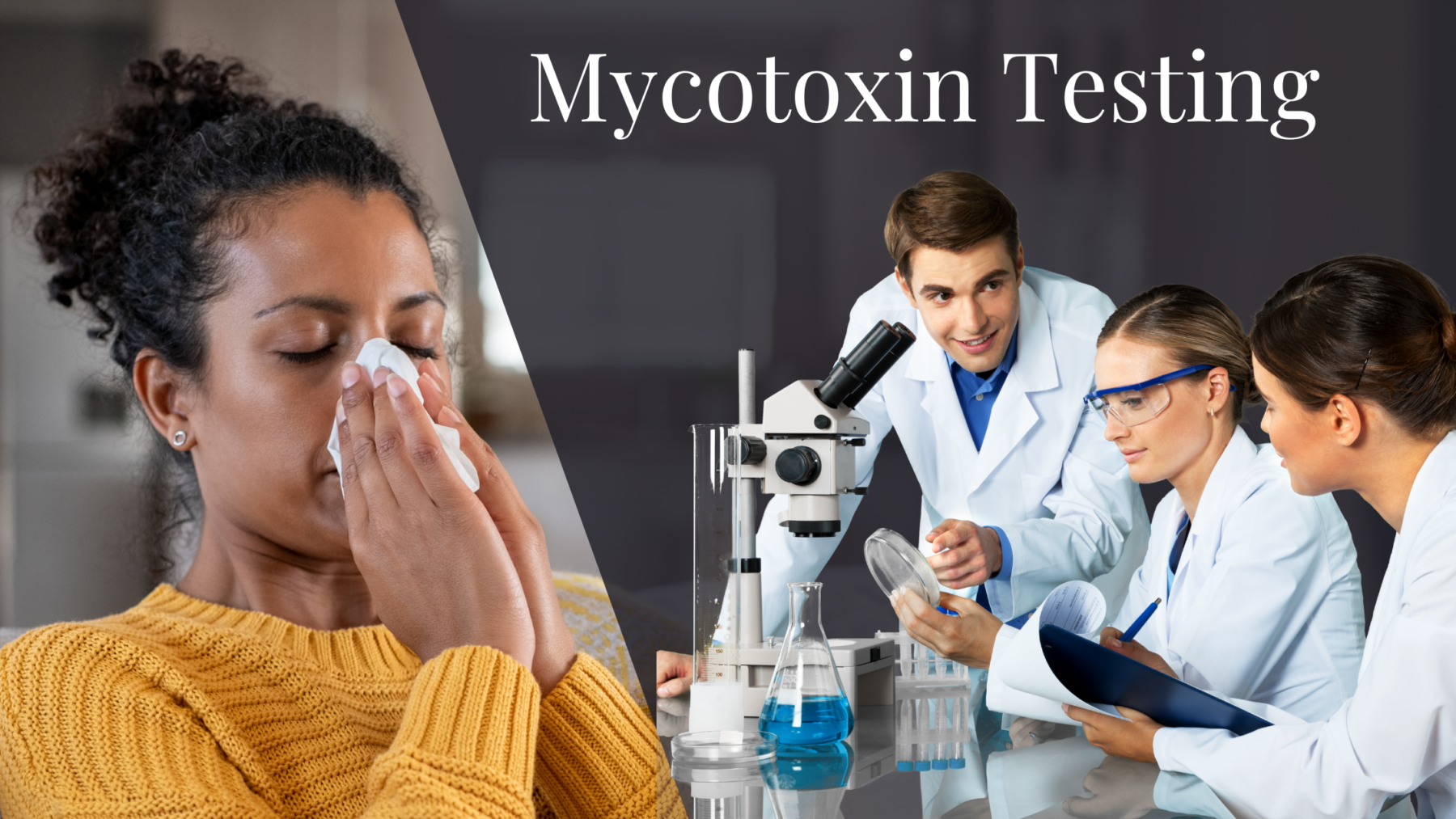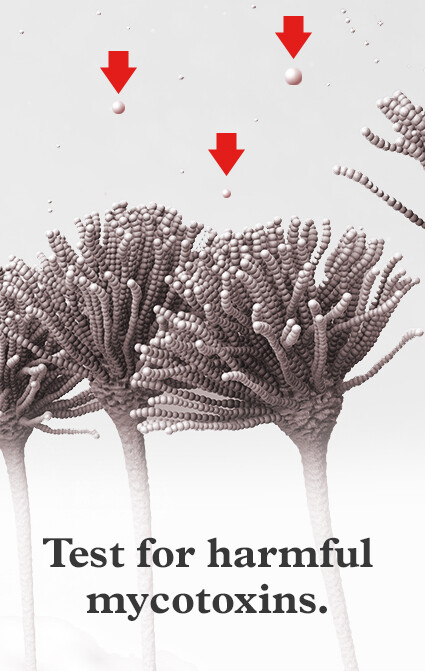Just How Mycotoxin Testing Helps Avoid Contamination and Secure Food Products

Mycotoxin testing is a vital method in the food industry, working as a frontline protection versus contamination by dangerous toxic substances created by mold and mildews. Via the application of sophisticated strategies like High-Performance Liquid Chromatography (HPLC) and Fluid Chromatography-Mass Spectrometry (LC-MS), food manufacturers can accurately identify and measure mycotoxin levels in agricultural products. This positive strategy not just makes sure compliance with rigorous security regulations yet likewise mitigates wellness dangers to consumers. Regular screening fortifies brand name reputation and economic health by lowering contamination-related events. How precisely do these screening procedures incorporate into the more comprehensive food safety technique?
Recognizing Mycotoxins
Understanding mycotoxins begins with recognizing that they are harmful additional metabolites created by specific molds, which can contaminate agricultural items. These metabolites are not crucial for the development or recreation of the fungis however can have serious ramifications for human and animal wellness. Mycotoxins are generally located in staple plants such as corn, wheat, barley, and nuts, where they can multiply under particular conditions of moisture and temperature.
There are numerous kinds of mycotoxins, each generated by various fungal varieties. Aflatoxins, created by Aspergillus types, are among one of the most infamous, understood for their carcinogenic buildings. An additional significant group consists of ochratoxins, created by Aspergillus and Penicillium species, which have nephrotoxic effects. Fusarium varieties create trichothecenes and fumonisins, both of which are related to numerous intense and persistent health and wellness issues.

Dangers of Mycotoxin Contamination
The dangers of mycotoxin contamination are diverse, posing significant hazards to both food security and public health and wellness. Mycotoxins, harmful compounds generated by specific sorts of fungi, can infect a wide variety of agricultural items including grains, nuts, flavors, dried fruits, and coffee. As soon as these contaminants infiltrate the food supply, they can lead to significant health and wellness issues such as liver damages, kidney failure, and also cancer. Vulnerable populaces, including youngsters, the elderly, and immunocompromised people, are especially in jeopardy.
Economic effects are another major problem. Contaminated plants can result in considerable economic losses for farmers and food producers as a result of reduced returns and the demand for costly purification actions. International trade can be significantly impeded as nations apply strict mycotoxin policies to secure their populaces, leading to rejected shipments and strained trade connections.
Ecological variables such as environment change worsen the threat of mycotoxin contamination. Variants in temperature level and humidity can create positive problems for fungal development, boosting the chance of contamination occasions. Hence, understanding and reducing these dangers are crucial for guaranteeing the security and integrity of blog here global food supplies.
Methods of Mycotoxin Testing
Accurately identifying mycotoxin contamination in agricultural items is essential for safeguarding public health and maintaining food safety criteria. Numerous approaches are used to find and measure mycotoxins, each offering certain benefits and constraints.
High-Performance Fluid Chromatography (HPLC) is a commonly utilized method due to its high sensitivity and accuracy. It includes separating mycotoxins from other materials in a sample, making it possible for exact metrology. Likewise, Liquid Chromatography-Mass Spectrometry (LC-MS) incorporates liquid chromatography with mass spectrometry to provide detailed molecular details, making it especially useful for recognizing numerous mycotoxins all at once - Mycotoxin testing Services.

Gas Chromatography-Mass Spectrometry (GC-MS) and Thin-Layer Chromatography (TLC) are also used, each with one-of-a-kind applications. GC-MS is effective for unpredictable mycotoxins, while tender loving care supplies a less complex, economical choice for initial testing.
Advantages of Routine Evaluating
Regular screening for mycotoxins in farming products provides various benefits, significantly adding to public wellness and food security. By determining contamination early, regular screening assists avoid the distribution of poisonous foods, consequently minimizing the danger of mycotoxin-related diseases among consumers. This aggressive technique this content not only safeguards human health yet likewise enhances the total high quality of food supplies.
Regular testing also supports regulative compliance. Various countries and areas have developed strict limits for mycotoxin degrees in food and feed. Adhering to these restrictions with normal testing ensures that manufacturers and providers fulfill legal criteria, thereby staying clear of penalties and profession obstacles. Preserving conformity fosters customer depend on and brand track record, which are critical for market success.
Furthermore, normal mycotoxin screening can lead to significant economic advantages. Early discovery of contamination permits prompt treatment, reducing potential losses from extensive contamination. Executing routine screening procedures can additionally decrease recall costs and related liabilities, which can be economically ravaging.
Moreover, normal screening gives useful information that can inform much better agricultural practices and storage space problems. By recognizing patterns of contamination, manufacturers can embrace safety nets, consequently contributing and reducing future risks to the sustainability of the food supply chain.
Implementing Testing Methods
Executing effective mycotoxin screening protocols is crucial for making certain the security and quality of farming products. Each phase has to be inspected to pinpoint where mycotoxin contamination is most likely to happen.
Once essential control points are determined, selecting appropriate testing approaches is necessary. Usual methods include enzyme-linked immunosorbent assay (ELISA), high-performance fluid chromatography (HPLC), and mass spectrometry (MS) Each method has its weak points and strengths; thus, choosing the correct one depends on the particular mycotoxin being tested, the required level of sensitivity, and available sources.

Finally, incorporating the testing protocols right into an extensive food safety monitoring system is a good idea. This enhances traceability and makes it possible for swift rehabilitative actions when contamination is detected, consequently safeguarding the honesty of the food supply chain.
Conclusion
Mycotoxin screening is crucial in preventing contamination and securing food supplies by enabling very early discovery of damaging toxic substances generated by mold and mildews in farming items. Regular testing enhances brand credibility, economic security, and trust fund in food safety and security by decreasing contamination-related losses and maintaining high standards in food manufacturing.
Mycotoxin screening is an essential method in the food market, serving as a frontline defense against contamination by harmful toxins produced by molds. An incorporated view strategy entailing farming methods, storage administration, and regular testing can minimize the threats connected with mycotoxin contamination, making sure food security and public wellness.
The threats of mycotoxin contamination are complex, presenting considerable threats to both food safety and public wellness.Routine testing for mycotoxins in farming items provides numerous advantages, substantially contributing to public wellness and food security.Mycotoxin testing is essential in protecting against contamination and securing food supplies by making it possible for very early detection of unsafe toxic substances produced by mold and mildews in agricultural items.